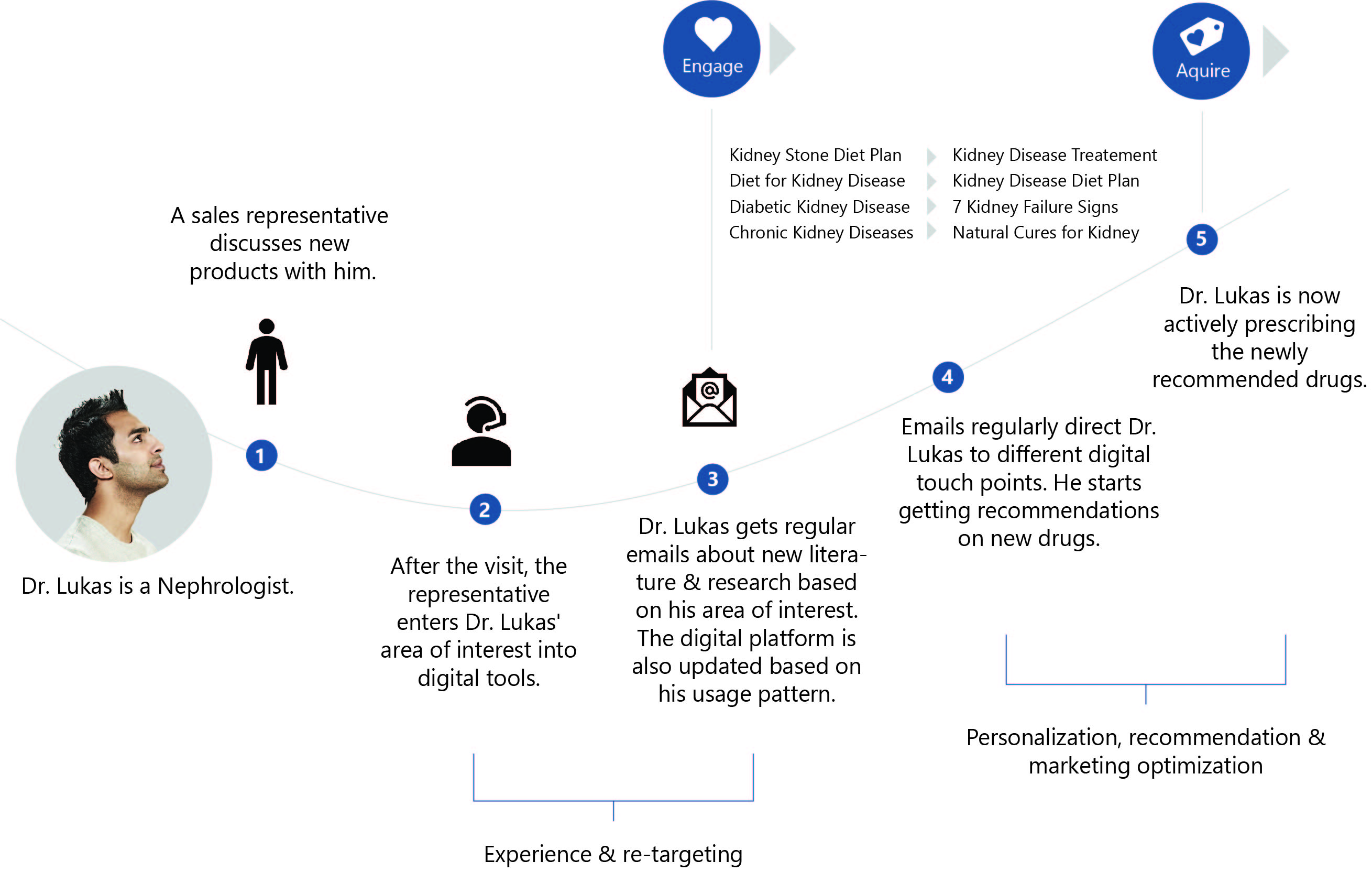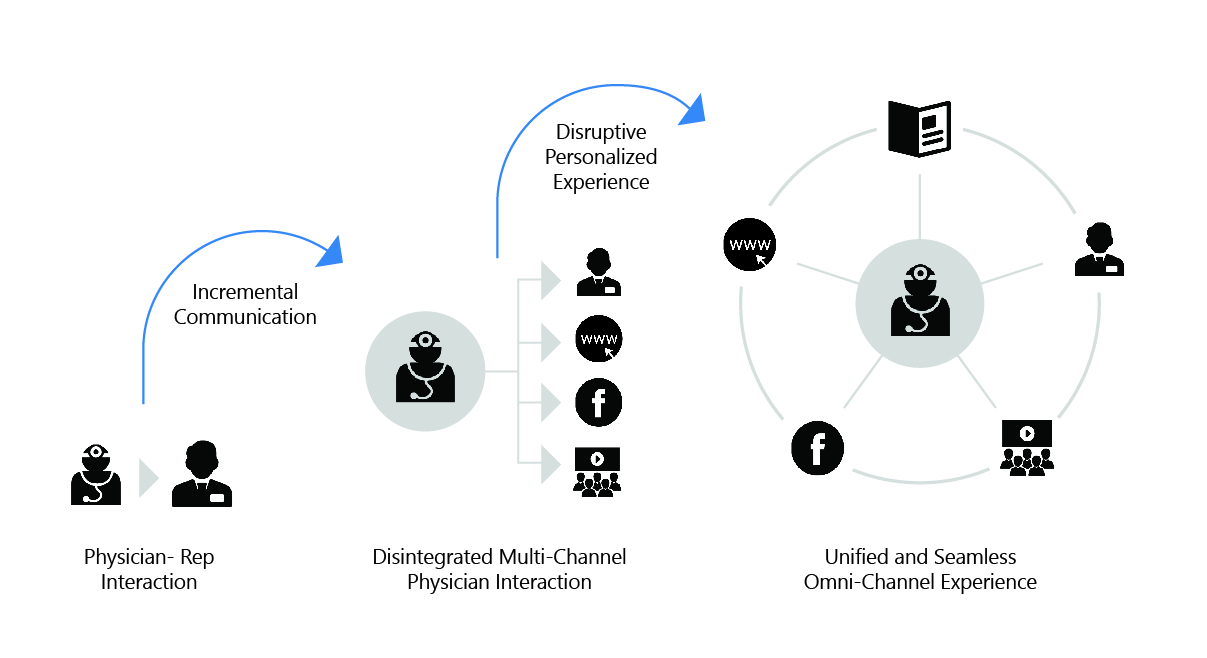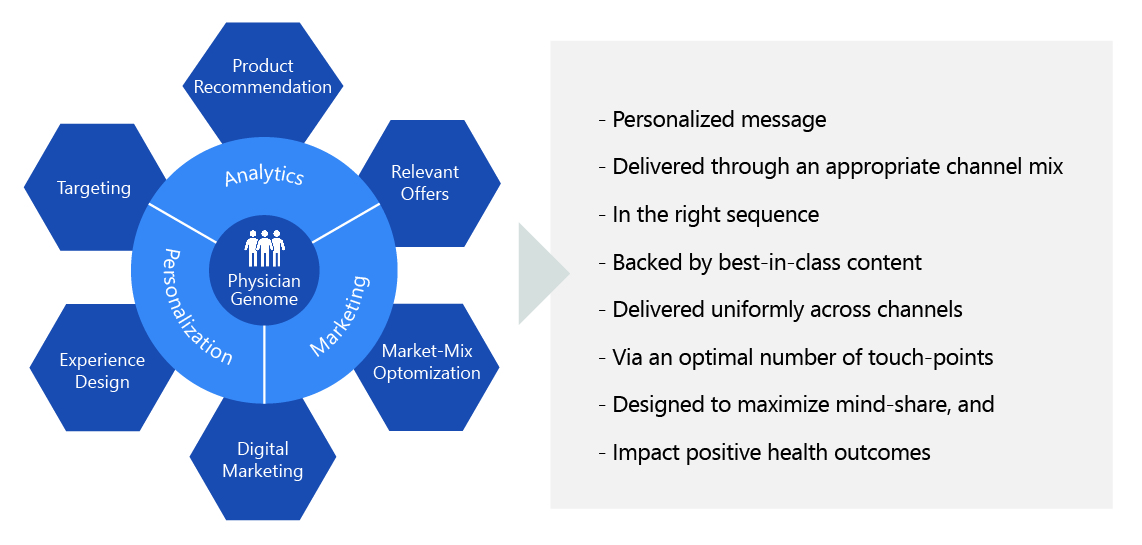 We live in an incredibly progressive era, where unprecedented medical advancements are leading to availability of new treatment options every single day. Recent statistics indicate that 22 new drugs were approved by the US FDA in 2016* and more than 500 new brands were launched in the past year**.
We live in an incredibly progressive era, where unprecedented medical advancements are leading to availability of new treatment options every single day. Recent statistics indicate that 22 new drugs were approved by the US FDA in 2016* and more than 500 new brands were launched in the past year**.
However, with so much progress, the challenge for innovators of new treatment solutions is to ensure that customers stay updated about what they have developed. And in today’s competitive era, with so many products, physician engagement becomes more and more important.
Historically the 'physician-provider' engagement has been designed around personal interactions. 'Old school’ CRM remained reactive where activities were carried out discreetly. With the advent of multiple digital channels, the new approach is more integrated, proactive and unified i.e., omni-channel.

Building a unified omni-channel experience
Having worked across various sectors that leverage digital and traditional marketing channels including e-commerce, consumer products, airlines, food products and others, we have identified the 4 key principles that marketers of tomorrow need to know.
1. Omni-channel to Omni-presentThe world of e-commerce and commerce are now seamlessly merged. It’s not about the phone or the desktop or the store anymore – it’s about all of these. Marketers need to provide a consistent and seamless experience regardless of the channel. We are quickly moving to a world where digital has gone beyond mobile to include technology-enabled, connected screens of all forms and sizes, requiring a truly integrated strategy.
Click here to read more about our digital marketing and personalization services that can help you enhance customer engagement.
2. Small Data and PersonalizationEvery successful omni-channel strategy or initiative starts by putting the customer at the centre and defining engagement approaches with their needs and preferences in mind.
Big data is about big data sets that represent large groups of people and large behaviors; big data needs to be complemented by a single unified view of each customer across channels, engagement initiatives and touch-points to drive personalization.
3. Continuous learningIdentifying the right omni-channel marketing formula and putting it in place takes time, patience, and perseverance. While digital media helps in getting quick results, it doesn’t necessarily prepare organizations to adapt to consumer behaviour. It also does not answer the critical question “How are consumers going to find our products or services?”. It is a continuous process of trial and error and informed decision making at every stage.
4. Analytics-driven innovationHaving all the numbers and statistics at your fingertips is one thing, but using the data effectively is a completely different exercise. Data and trends predicting the consumer journey, preferences, channel and timing evolve very rapidly. However, continuous analysis of data will help one stay ahead of the curve and duplicate successes.
Embracing innovation and omni-channel marketing to its full potential, from other industries into healthcare requires movement from “incremental to disruptive”. When marketers move from a single touch-point to multiple touch-points some of the challenges they face include multiple choices/points of interaction, lack of integrated interaction data and non-unified or siloed messaging. What is required however is a seamless and complementary multi-channel interaction, and integrated customer data for a single version of the truth across channels.

Incremental to Disruptive
To that effect, understanding an entire Physician Genome is at the heart of a seamless collaboration with the physician. Physician Genome is a detailed customer profile – personal preferences, educational background, etc. It includes a 360-degree view of the interaction journey of a customer with the brand and beyond over time.
- Data & Integration are the foundational building blocks, ensuring that all interactions are captured and integrated to enable a unified customer journey.
- Analytics & Algorithms allow conversion of data into insights to enable improved decisions around engaging the customer.
- Delivery Channels create a path for converting the insights into action on the field.
Here is an sample framework that helps life-sciences companies understand the customer and provide true value-based delivery in a personalized and efficient manner.

Value-based delivery framework
Finally, there are 5 guidelines that life sciences organizations must explore on their journey to omni-channel engagement:
1. Focus on engagement, not just promotion
- Expand the content supply chain.
- Build new relationships between content creators and regulatory groups.
- Develop faster microcycle approaches to creating, reviewing, revising, and publishing content.
2. Manage experience across touch-points
- Manage the series of interactions a patient or customer has with a brand in an integrated and coherent manner.
- Have a greater understanding of the customer’s longitudinal journey.
3. Expand the portfolio of touch-points
- Engage with digital citizens throughout their daily lives, not just at a point of purchase or in the physician’s office.
- Expand the set of external partnerships and sponsorships pharma companies engage in.
4. Strengthen digital commercial capabilities
- Key additions to existing commercial models: analytics, experience design.
- Develop test-and-learn approaches to innovation.
5. Reallocate investment across the commercial model
- Save costs by shifting legacy go-to-market operations to new, digital channels.
- Consider lower-cost channels, substituting tele-sales and webinars.
Besides these five guidelines that are useful in building a unique digital experience, we at Nagarro combine three simple principles – design experience, digital seamlessness and data intelligence – into a single continuous process and deliver next generation physician engagement solutions.





